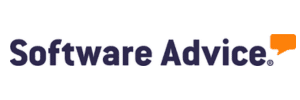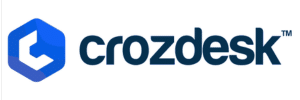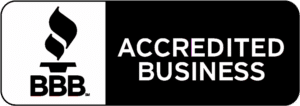Key Takeaways:
- Seamless POS Integration: Offers robust point-of-sale systems that handle fast transactions, multiple payment methods, and sync with inventory and customer data for efficient checkouts.
- Advanced CRM Features: Includes tools for customer segmentation, loyalty programs, and purchase history tracking to personalize marketing and boost customer retention.
- Employee Management Tools: Tracks staff performance, schedules, and permissions, ensuring accountability and efficient resource allocation across locations.
- Centralized Management: Enables oversight of multiple store locations from a single platform, ensuring consistent operations, pricing, and promotions across all sites.
- Omnichannel Support: Integrates in-store, online, and marketplace sales (e.g., Amazon, Shopify) for a unified view of inventory, sales, and customer data across all channels.
Finding the right multi-store retail management software is critical for franchise and chain businesses. After all, we all know it’s hard enough to manage one location, but keeping inventory, sales, supplier relations, employees, etc., for businesses with multiple locations or franchises becomes exponentially harder.
Luckily, you have some options!
In fact, many retailers will be surprised to learn just how powerful a great multi-location point of sale can transform and scale a business. Let’s go over the best ways that a multi-store or franchise POS works and what type of benefits it offers.
1. KORONA POS: Best Multi-store Retail Management Software
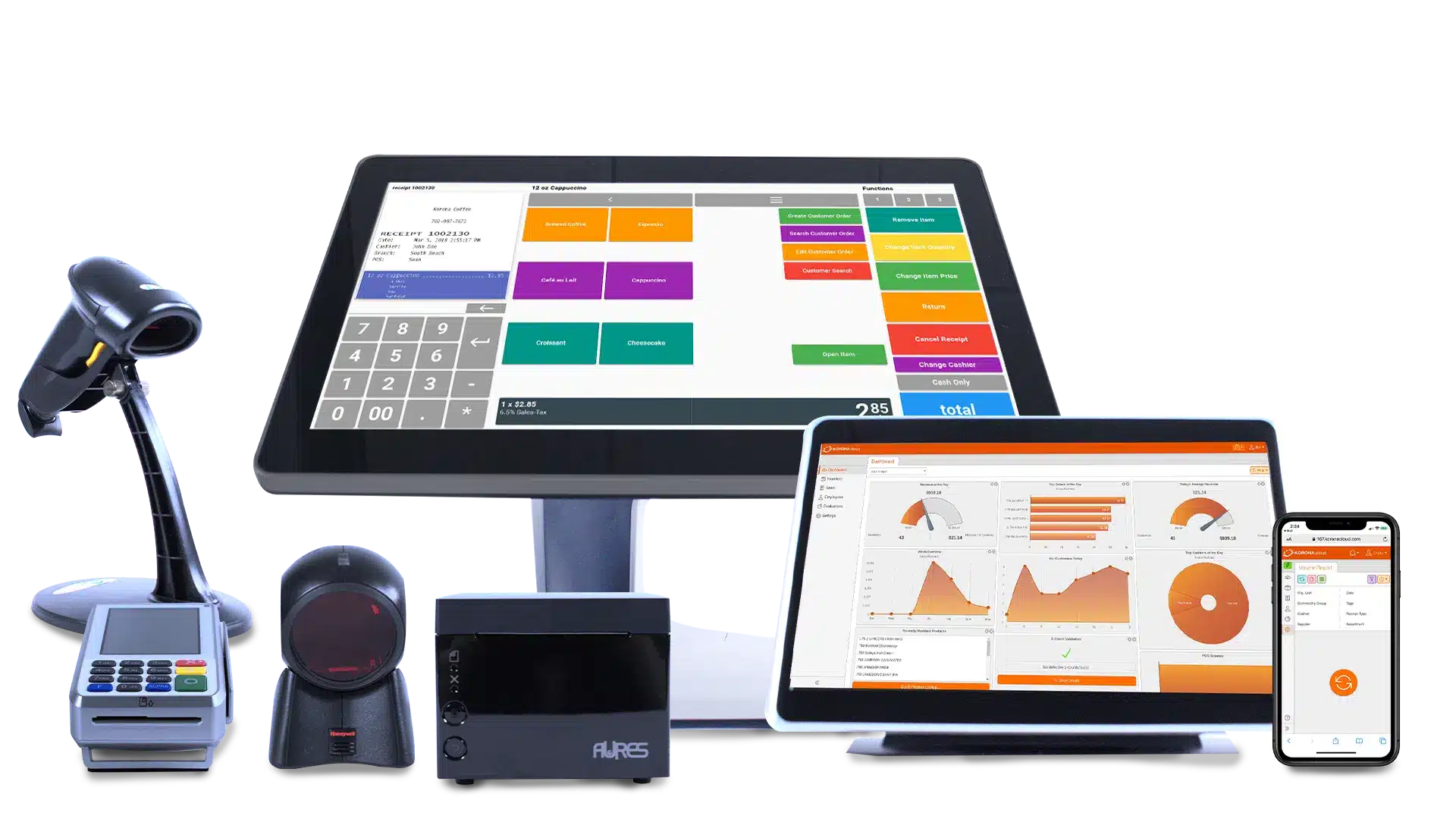
KORONA POS is a customizable, scalable point-of-sale system designed for multi-store retail management. It offers transparent pricing without hidden fees or long-term contracts. It supports businesses like retail stores, wineries, and cafes with tools for inventory, reporting, and integrations.
The system is mobile-ready, ensuring flexibility across locations, and includes robust customer support, free and unlimited, by phone, chat, or email.
With advanced inventory management for centralized control and powerful analytics for multi-location insights, KORONA POS helps prevent overstock/understock issues and enables quick reallocations during demand shifts.
KORONA POS overview
KORONA POS offers a cloud-based POS system tailored for small to medium-sized businesses. Key features include inventory management, sales reporting, customer relationship management (CRM), and employee management.
For multi-stores retail businesses, KORONA POS is particularly beneficial due to its efficient inventory tracking capabilities.

Pros
- Unlimited free trial
- Processing-agnostic
- Excellent customer POS support
- Robust inventory tracking
Cons
- Steep learning curve
- Not ideal for complex menus
- No warehouse management
Korona POS Pricing
Core
$59/mo
- Various reporting
- Product data base
- Promotions and gift cards
Retail
$69/mo
- Barcode automation
- Supplier interface integration
- Real-time tracking
Adds-on
From $10 to $50
- KORONA Plus
- KORONA Integration
- KORONA Invoicing
Key features
Automated Stock Transfers and Reordering: Businesses can automate internal stock transfers between locations, creating orders via the backend or POS terminal. Features like dispatch notifications serve as an intermediary step for both internal (store-to-store) and external (supplier) transfers.
Order Level Optimization and Store Order Cycles: Using historical data, KORONA POS optimizes reorder quantities with a single click, factoring in sales velocity and supplier lead times. Order cycles automate reporting for items needing replenishment, generating supplier-specific orders at set intervals, which is especially useful for chains with varying demand across locations.
Product Performance Analysis: Track profits, revenue, and sales by product across locations, with ABC inventory grading for prioritizing high-value items.
Shift and Commission Tracking: The system makes it easy to track employee shifts, tips, and commissions from all your locations, simplifying payroll and management tasks.
Theft Prevention: KORONA POS includes anti-theft features such as forced drawer closing and restrictions on voiding tickets or items, which helps prevent internal theft.
Single Platform Oversight: KORONA POS allows businesses to manage all store locations from one centralized back-office platform, eliminating the need for separate systems per store. For example, a retailer with stores on the east and west coasts can customize data views based on regional economics, ensuring tailored insights without overwhelming the user with aggregated data.
Seamless eCommerce Integration: The POS system can integrate with eCommerce platforms like WooCommerce, allowing you to sync inventory and sales data between your physical stores and your online store.
Cross-Location Promotions: KORONA POS allows you to run promotions and discounts that can be applied to a single store, a group of stores, or all locations, giving you flexibility in your marketing efforts.
Pricing
KORONA POS offers a transparent pricing structure with a few different options for businesses. The base plan, KORONA POS Core, starts at $59 per month per terminal and includes fundamental POS features, reporting, e-commerce capabilities, and 24/7 customer support. For businesses that require more advanced features, such as advanced inventory management and automation, the KORONA POS Retail plan is available for $69 per month per terminal.
In addition to these core plans, KORONA POS provides various optional add-on modules to cater to specific industries and needs. These modules are priced on a monthly basis per terminal, gate, or franchise, depending on the module.
For example, the KORONA Food module, designed for quick-service restaurants, costs an additional $10 per terminal per month, while KORONA Ticketing for admission-based businesses is $50 per month per gate. There are also modules for invoicing, franchise management, and integrations, all with their own individual costs.
Where KORONA POS shines
- Exceptional customer support: 24/7 US-based assistance by phone, chat, or email resolves issues quickly, making transitions and troubleshooting seamless for multi-store owners.
- High customization for specific industries: Tailored features like age-restricted compliance and loss prevention excel in high-risk retail, reducing theft and ensuring regulatory adherence.
- Scalable and transparent pricing: No contracts or hidden fees allow businesses to grow without unexpected costs, ideal for expanding chains.
Where KORONA POS falls short
- Learning curve for advanced features: The system’s depth can be overwhelming initially, with terminology from its German origins requiring adjustment.
- Limited mobile back office functionality: While POS is mobile-ready, some advanced reporting and features are better on desktop, restricting on-the-go management.
Customer reviews
- From Capterra: “I had such an antiquated system before, implementing Korona has been a huge game changer for my overall profitability. Implementation was seamless and painless! The support staff is great and always ready to help. Had I known it would be this easy, I would have made the switch sooner”
- From G2: “KORONA POS stands out for its intuitive interface and robust reporting tools, which make managing inventory and tracking sales incredibly efficient. The cloud-based system allows for real-time access from anywhere, and the customer support team is consistently responsive and helpful.
Who KORONA POS is best for
- Small to mid-sized businesses seeking affordability: Transparent pricing and no contracts suit budget-conscious owners needing robust features without long-term commitments.
- High-risk retailers like liquor, vape, and tobacco shops: Advanced loss prevention and compliance tools ensure secure operations for age-restricted sales.
- Multi-store chains in retail or hospitality: Centralized inventory and reporting support scalable growth for businesses with 5+ locations.
2. Shopify POS: Best Multi-Store Retail Management Software for eCommerce

Shopify POS is a multi-store retail management software that streamlines operations with unified data, reporting, and inventory management across locations. It supports omnichannel selling, integrating in-store, online, social media, and marketplace sales.
The platform offers reliable hardware and customizable setups for various selling scenarios. It connects to 100M+ shoppers via Shopify Payments and includes features like staff management, payment processing, and customer insights.
Retailers can start for free, with options for personalization through apps and Shopify Partners. With seamless integration with existing Inventory Management Systems (IMS) and Order Management Systems (OMS), Shopify POS enables consolidated customer management for improved buying experiences and boosts retention through cross-franchise rewards.
Key features
Omnichannel Selling Tools: Shopify POS excels at bridging the gap between online and physical retail. Features like “Buy Online, Pick Up In-Store” (BOPIS) and the ability to accept returns and exchanges at any location, regardless of where the purchase was made, provide a flexible and frictionless customer experience. Staff can also access online inventory in-store, preventing missed sales.
Unified Inventory Management: The system syncs inventory in real-time across all sales channels, including your online store and all physical locations. This helps prevent overselling and provides a single, accurate view of stock levels. Advanced features in Shopify POS Pro include restock alerts, stock transfers between stores, and barcode scanning for efficient inventory counts.
Staff Management and Permissions: The system allows managers to create custom roles and permissions for employees, controlling access to sensitive data and functions like refunds or discounts.
Integrated Payments and Hardware: Shopify POS comes with its own payment processing solution, Shopify Payments. It accepts a wide range of payment methods and is designed to work with Shopify’s proprietary hardware (card readers, barcode scanners, etc.)
Pricing
Shopify POS pricing in 2025 varies depending on the plan and business needs. Shopify POS Lite is included free with all Shopify paid plans, starting at $5/month for the Starter plan, $39/month for the Basic plan, $89/month for the Retail plan, $105/month for the Shopify plan, $399/month for the Advanced plan, and $2,000/month for Shopify Plus, catering to businesses of different sizes.
For advanced features like enhanced staff permissions, detailed inventory reporting, and faster workflows, Shopify POS Pro costs $89 USD/month per location, or $79 USD/month if billed annually, offering a 25% discount. Hardware costs range from $0 to $2,000 upfront, with specific items like the Tap & Chip Card Reader at $49, POS Go at $299, and the Countertop Kit at $459.
Transaction fees depend on the plan, with Shopify Payments charging 2.4% to 2.9% + $0.30 for in-person transactions and 2.9% + $0.30 for online sales on the Basic plan, dropping to 2.4% + $0.10 for in-person on the Advanced plan. Additional app fees from the Shopify App Store, ranging from $5 to $599/month, may apply for customizations like inventory or customer management.
Where Shopify POS shines
- Seamless eCommerce integration: Automatic catalog syncing ideal for online-first businesses expanding to physical stores.
- User-friendly setup and scalability: Quick onboarding with flexible hardware for pop-ups and growing chains.
- Built-in loyalty and customer tools: Unified profiles boost retention and personalized marketing.
Where Shopify POS falls short
- Limited advanced features without apps: Core functions require paid add-ons, increasing costs.
- Transaction fees for non-Shopify payments: Adds expenses unless using their processor.
- Hardware reliability issues: Some users report connectivity problems with printers and scanners.
Customer reviews
- From Capterra: “For its price point, Shopify POS is easier to use and more customizable than other POS software/hardware combos like Square, but greater ease of access and business use is locked behind paywall tiers.” (4.6/5 overall rating).
- From G2: “Shopify POS integrates seamlessly with the Shopify online store, making it easy to manage inventory and sales across channels. The system is user-friendly, with tools like analytics and customer management.” (4.4/5 overall rating).
Who Shopify POS is best for
- eCommerce businesses expanding offline: Automatic syncing suits online sellers opening pop-ups or chains.
- Hybrid retail operations: Ideal for blending in-store and online with loyalty programs.
- Small to mid-sized startups: Free start and scalable plans for budget-conscious growth.
3. Celerant Technology: Best Multi-Store Retail Management Software for Customizable Specialty Retail

Celerant Technology is a retail management system for multi-store operations, unifying the entire business in one platform. It supports specialty retail with deep customization, firearm compliance, and complex catalog management.
Celerant Retail Commerce offers a comprehensive retail management solution with features like inventory management, point of sale, eCommerce integration, and customer relationship management.
CELERANT overview
Celerant Technology is located in Staten Island, New York. The company provides solutions for various retail sectors, including apparel, footwear, and sporting goods.
Cloud-based for remote access, in-house payments, and 24/7 support. Tailored for gun shops and outdoor gear, Celerant offers unified vendor management and scalable solutions for expansions, ensuring efficiency across locations with no hidden fees.
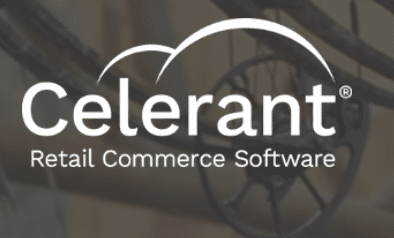
Pros
- Great reporting features
- Easy user-friendly interface
- Specific inventory features for clothing stores
Cons
- Poor customer support
- Not much flexibility in payment processing
Pricing
Cumulus Retail Point of Sale
$125/mo
- Product and pricing
- Customers and loyalty
- Purchasing and inventory
- Employee management
Cumulus Retail eCommerce
$250/mo
- Responsive templates
- Dynamic navigation
- Smart product search/filter
- Shopping cart
Cumulus Retail All-In-One
$350/mo
- Point of sale and eCommerce
- In-store features
- Online features
- POS and web integration
Stratus Enterprise
Custom
- Enterprise
Key features
- Customizable inventory management: Handles complex catalogs with variants for specialty items.
- Firearm compliance tools: Ensures regulatory adherence for gun shops.
- Unified vendor management: Centralizes suppliers for multi-store efficiency.
- AI-powered reordering: Automates stock based on sales trends.
- Cloud remote access: Monitors operations from mobile devices.
- Integrated payments: In-house processing for consistent transactions.
- 24/7 support: Unlimited assistance for all locations.
Pricing
Celerant pricing is custom; monthly SaaS fees start around $150/location. Hardware bundles ~$999 with rebates; no setup fees.
Where Celerant shines
- Deep customization for specialty retail: Personalization options suit complex needs like outdoor gear.
- Compliance and vendor tools: Firearm features and unified management for regulated industries.
- Scalable with strong support: 24/7 assistance aids growth without hidden costs.
Where Celerant falls short
- Limited content in overviews: Sparse details on features make evaluation hard.
- Custom pricing opacity: No standard tiers require quotes.
- Integration dependencies: May need custom setup for full use.
Customer reviews
- From Capterra: No specific snippets; general praise for customization but notes lack of depth.
- From G2: No snippets; ratings indicate good for specialty but limited feedback.
- From Trustpilot: No specific; users highlight support for retail.
Who Celerant is best for
- Specialty retailers like gun shops: Compliance tools for regulated products.
- Outdoor gear chains: Custom catalogs for complex inventories.
- Mid-sized customizable operations: Deep personalization for 5+ locations.
4. BRIGHTPEARL
Brightpearl is a retail operating system focused on omnichannel order & inventory orchestration, accounting automation, and fulfillment routing. It excels for multi-channel merchants that sell across ecommerce platforms and marketplaces and need automated order routing, real-time inventory, and financial posting.
Brightpearl positions itself as an “OMS + ERP-lite” for merchants crossing $1M in revenue who require strong integrations to ecommerce platforms and 3PLs and prefer a cloud solution tuned to retail operations.
Key features
- Order & inventory orchestration: real-time stock sync and automated fulfillment rules. Brightpearl
- Accounting automation: AR/AP posting and reconciled ledgers for retail transactions. Capterra
- Marketplace & 3PL integrations: plug-and-play connectors and shipping automation. Brightpearl
Pricing
Brightpearl tiers are subscription-based and described on their pricing page; pricing depends on modules, order volumes, and integrations. Brightpearl
Where Brightpearl shines
- Multichannel merchants: centralized OMS that reduces oversells and automates routing across DCs and stores.
- Retailers wanting accounting automation: built-in finance flows reduce reconciliation burden.
Where Brightpearl falls short
- Some larger enterprise retailers may need a deeper ERP; Brightpearl sits between POS/OMS and full ERP.
Customer reviews
- Capterra/G2: Reviewers like the order automation, integrations, and support; they occasionally note limitations when used as a full ERP.
Who Brightpearl is best for
- Best fit: Multichannel retailers and brands (>$1M revenue) who need order management, automated fulfillment, and tight ecommerce + marketplace integrations.
5. SQUARE FOR RETAIL
Square for Retail offers a frictionless POS with integrated Square payments, accessible hardware, and simple multi-location inventory.
It’s tailored to small and growing chains that prize low friction (simple onboarding, flat pricing), built-in payments, and modern hardware (Terminals, Handheld). Square’s strength is predictability: easy setup, a single vendor for payments and POS, and transparent fees, which makes it a top choice for independent multi-store operators with straightforward inventory and reporting needs.
Key features
- All-in-one payments + POS: single vendor for hardware, payments, and software. G2
- Inventory basics for multi-store: transfers, purchase orders, barcode printing. G2
- Hardware options: terminal, countertop, and handheld devices. The Verge
Pricing
Square offers transparent subscription tiers and interchange-based processing; Square for Retail is typically a paid plan with transaction fees for payments. Exact pricing is public on Square’s site. G2
Where Square shines
- Low-friction multi-store growth: easy onboarding and integrated payments reduce complexity. G2
- Independent retailers: predictable costs and simple inventory fit small chains well. TechRadar
Where Square falls short
- Not as feature-rich for complex promotions, multi-DC replenishment, or enterprise financial consolidations.
Customer reviews
- G2/Capterra: users praise ease of use, hardware and payment integration; some request deeper enterprise features.
Who Square is best for
- Best fit: Small to modest multi-store operators and indies that want low overhead, simple inventory, and bundled payments/hardware.
6. MICROSOFT DYNAMICS 365 COMMERCE + LS RETAIL (LS Central)
LS Central (LS Retail) is a commerce suite built on Microsoft Dynamics 365/Business Central, delivering POS, inventory, loyalty, promotions, head-office, and finance integration.
It targets large and complex retail operations that want POS tightly coupled to ERP/finance, advanced promotions, and compliance support across locales.
LS Central excels where a single code-base linking back office to stores is desired and where extensibility via Microsoft’s ecosystem matters. Implementation is typically done with partners and suits retailers with serious scale and customization needs. G2+1
Key features
- End-to-end commerce: POS → back office → finance on Dynamics platform. G2
- Promotions & loyalty: sophisticated engines integrated to POS and CRM. G2
- Extensibility: leverage Microsoft stack and partner network for deep customizations. G2
Pricing
Pricing is typically quote-based and includes Dynamics licensing, LS Central modules, and partner implementation costs. Expect enterprise TCO and partner fees. G2+1
Where LS Central shines
- ERP-centric retailers: need POS tightly integrated to finance and centralized control.
- Highly configurable operations: complicated promos, loyalty, and localization needs.
Where LS Central falls short
- Higher implementation and partner dependency; not ideal for businesses seeking lightweight solutions. G2
Customer reviews
- G2/SoftwareAdvice: users praise unification with Dynamics and feature depth; common notes are implementation complexity and dependency on certified partners.
Who LS Central is best for
- Best fit: Large chains and enterprise retailers requiring deep ERP integration, regional compliance, and extensible Microsoft-based architectures.
7. REVEL SYSTEMS
Revel Systems is an iPad-centric cloud POS with integrated inventory, ordering, and labor management. Revel targets hospitality and retail chains that want a mobile-first POS with strong ordering flexibility (mobile & kiosks) and APIs for integrations. It’s favored by multi-location retailers and QSRs that need menu/order configuration, inventory control, and workforce scheduling all within one vendor ecosystem. Revel balances ease of use with extensibility for mid-market chains.
Key features
- iPad-based POS: mobile and counter sales with offline caching.
- Order & inventory integration: menus/catalog, stock tracking, and integrated payments.
- Labor & reporting: basic scheduling, clock-ins, and sales analytics.
Pricing
Revel typically uses subscription pricing plus hardware and payment processing; quotes depend on modules (POS, kiosk, self-order) and support level.
Where Revel shines
- Mobile & quick-service operators: compact, fast ordering flows and kiosk support.
- Mid-market multi-site retailers: those wanting a modern iOS frontend with an integrable backend.
Where Revel falls short
- Mixed reviews on customer support and price sensitivity for small operators.
Customer reviews
- G2/Capterra: many users praise the interface and functionality; some negative feedback around support and pricing.
Who Revel is best for
- Best fit: Multi-location quick service and retail operators that want an iPad-first POS with ordering, kiosks, and staff management.
How to Choose A Multi-store Retail Management Software?
For both independent multi-store businesses and retail franchisees, the software must provide robust inventory, sales, and employee management while accommodating operational complexities specific to managing multiple outlets.
Start with fit: your operating model
The very first step in choosing multi-store retail management software is clarifying your operating model. Every other decision flows from this foundation. Think about how your merchandising works: do you sell items with size and color variants, bundled products, serialized electronics, or perishable goods that need lot and expiry tracking?
Then map your footprint and inventory flow. The number of stores and checkout lanes, whether you run a central distribution center, and whether you support inter-store transfers or omnichannel services like BOPIS and ship-from-store will all influence requirements. Geography matters too—currencies, languages, tax rules, and data residency regulations vary by region.
Payments also drive vendor selection: you’ll want to understand your preferred processors, fee structures, and whether offline acceptance is essential. Finally, governance is key: a corporate-owned chain has different needs from a franchise network, where master data control and royalty reporting become non-negotiable.
Core multi-store features you should require
1. POS & checkout
A strong point of sale must go beyond scanning items. Modern retailers should demand offline-first capability with local queueing, ensuring no sales are lost when connectivity drops. Speed is also critical—transactions should process in seconds, not minutes.
The POS should handle returns and exchanges across locations, enforce promotion rules at the register, and support flexible tenders such as split payments, deposits, and store credit. Gift cards need to be redeemable chain-wide, while receipts should be digital, branded, and QR-enabled.
Finally, hardware compatibility—scanners, printers, scales, cash drawers, mPOS, or kiosks—must be broad enough to support different store formats.
2. Inventory & merchandising
Managing inventory centrally is where many systems break down at scale. Look for a unified catalog that supports variants, bundles, and assemblies, with alternate barcodes and units of measure. Traceability is a must for serialized products or expiring goods, with audit-proof stock ledgers to track every movement.
Replenishment engines should cover basics like min/max rules as well as more advanced forecasting based on demand curves or vendor lead times. Efficient inter-store transfer workflows—request, pick, ship, and receive—save teams hours of manual adjustments.
Stores also need support for multiple locations, such as backrooms and bins, plus mobile tools for cycle counting, receiving, and stocktakes. Landed cost and multi-currency handling are non-negotiable if you’re importing or operating internationally.
3. Purchasing & supply chain
For chains managing procurement centrally, purchase orders, advanced shipping notices, and EDI integrations are table stakes. Systems should handle allocations, whether you’re pushing stock preseason or adjusting in-season, and support DC operations like cross-docking or wave receiving. If you rely on dropship or vendor-managed inventory, confirm those options are supported without costly customization.
4. Omnichannel & marketplace
Omnichannel success depends on real-time visibility. A capable platform should support online shopping, in-store pickup (BOPIS), returns across channels (BORIS), and ship-from-store—all with SLA tracking and intelligent order routing.
Real-time inventory availability across every channel, including ecommerce and marketplaces, reduces cancellations and improves customer trust. Connectors for platforms like Shopify, Magento, or Amazon should be built in, and a “save-the-sale” feature at POS ensures you never lose a shopper just because an item is out of stock locally.
5. Pricing & promotions
Pricing control is more complex in multi-store environments. Retailers should look for centralized price books with effective dating and the ability to segment by region or store type.
A robust promotion engine allows you to configure buy-one-get-one deals, mix-and-match discounts, thresholds, bundles, and exclusions.
Markdown planning, clearance workflows, and auditability are also vital, especially for fashion or seasonal categories where price changes are frequent.
6. CRM, loyalty & clienteling
Your system should consolidate customer profiles into a single view, respecting consent and privacy regulations like GDPR or CCPA. Loyalty programs—points, tiers, or vouchers—should be configurable and trackable across all stores.
Advanced clienteling tools can help associates deliver personalized experiences by accessing purchase history, managing wishlists, and even logging outreach or appointments.
7. Analytics, accounting & tax
Multi-store retailers thrive on insight. Dashboards should update in real-time and allow drill-downs from KPIs to individual receipts or stock movements. Useful KPIs include GMROI, sell-through, stock turns, shrink, and on-shelf availability.
The system should integrate smoothly with your ERP or accounting platform, support valuation methods like FIFO and weighted average, and manage tricky areas like deferred revenue from gift cards. Tax compliance and fiscalization are particularly critical for cross-border operations.
8. Security, compliance & reliability
Data security isn’t optional. A strong retail management platform must be PCI DSS compliant, support tokenization, and ensure no payment card data is stored. Role-based access, MFA, and immutable audit logs protect against internal fraud.
Beyond security, resilience matters: look for data residency options, encrypted backups, recovery commitments, and a proven uptime SLA of 99.9% or higher. Offline selling capability should be real, not just “catalog caching.”
9. Platform & integrations
Finally, consider extensibility. Systems should expose public APIs, webhooks, and SDKs with clear documentation and rate limits. This enables integration with ecommerce, ERP, and third-party services without heavy vendor reliance.
Some platforms even support custom scripting or serverless extensions for store-specific logic. Payments should be processor-agnostic, giving you leverage on fees and ensuring business continuity with offline fallback.
Architecture choices
Retailers face three broad architecture paths. All-in-one suites simplify vendor management and can be faster to deploy, but they sometimes sacrifice depth. Composable, best-of-breed stacks combine POS, OMS, WMS, ecommerce, and CDP solutions, giving you the deepest features and flexibility at the cost of greater integration complexity.
Cloud-based SaaS is standard for most modern operations, though hybrid models with local caching make sense in regions with poor connectivity. On-premise remains relevant only when legally required.
Implementation specifics that make or break success
Technology is only half the battle. Implementation determines ROI. Data migration must be carefully planned: clean up SKUs, normalize attributes, map taxes, and import gift cards and loyalty balances.
Cutover requires discipline: dual-running systems, freezing catalogs, and testing contingency plans. Training should be role-based, with cashiers, managers, and planners curricula.
Change control policies help avoid chaos, while store readiness checklists (hardware, connectivity, test transactions) ensure no location goes live unprepared.
TCO & contract
Before signing, model your true cost of ownership over at least five years. Factor in licenses (per store, per lane, or module-based), payment processing fees, implementation and migration costs, integrations, support tiers, and hardware.
Pay close attention to payment margins; even a small fee swing can have a significant financial impact. Ask about sandbox limits, reporting surcharges, and your rights to export data if you exit. Always negotiate SLAs, roadmap visibility, and price protections upfront.
What to test in demos and pilots
Never accept a canned demo. Script specific scenarios that mirror your toughest use cases: a cross-store return on a different tender, an offline sale that resyncs automatically, a stacked promotion with exclusion rules, or an inter-store transfer initiated on mobile. Test BOPIS workflows, cycle counts, receiving via ASN, and dashboards that drill from KPIs to receipts. Include edge cases—like partial refunds or gift card redemptions—to see how the system behaves when things go wrong.
Red flags to watch for
Some gaps are deal-breakers. Be wary of POS systems that can’t capture tenders offline, inventory modules without an auditable stock ledger, or vendors who charge extra for API access. If promotions don’t work consistently across POS and ecommerce, or if inter-store transfers require manual adjustments, expect operational headaches. Franchises should walk away if royalty or ad-fund reporting is treated as a custom add-on rather than a standard feature.
KPIs to track after go-live
Once deployed, measure relentlessly. Target at least 97% stock accuracy and 95% cycle count compliance. Track GMROI, sell-through, and turns, alongside shrink and on-shelf availability. Operational KPIs include inter-store transfer SLA adherence, checkout speed, and downtime per store. On the omnichannel side, watch BOPIS fulfillment times, cancellation rates, and BORIS return efficiency. Returns, fraud rates, and cash variances round out the picture of whether your system is delivering.
Franchisee & franchisor specifics
When selecting a retail management platform for a franchise business, the evaluation criteria shift slightly. Beyond POS and inventory, governance and financial controls become paramount. A franchisor must be able to set and enforce brand standards while still giving franchisees room to operate day-to-day.
Governance and controls
Centralized master data is non-negotiable in a franchise model. The franchisor should control the product catalog, pricing rules, and promotional programs, while franchisees receive only the subset relevant to them.
A good system allows the franchisor to enforce price books globally while permitting local overrides within defined limits.
Approval workflows should be in place for promotions or price changes initiated by franchisees, ensuring consistency with brand standards while retaining flexibility for local market conditions.
Financials and compliance
Royalty and ad-fund calculations are core to the franchise relationship. The system should automate these by applying pre-set rules, whether a percentage of net sales after returns or a fixed contribution to a marketing fund.
Mandated vendor compliance is also important—franchisees must purchase approved SKUs from designated suppliers, and the system should block unapproved vendors or items.
A strong platform also provides audit tools, such as brand compliance checklists, photo evidence uploads, and scoring, so franchisors can verify that franchisees are meeting operational standards.
Data and privacy
Franchise systems must carefully balance visibility and privacy. A franchisor needs holistic access to network-wide data for benchmarking and performance management, but individual franchisees should only see their own store data. Some platforms even offer anonymized benchmarking tools so franchisees can compare themselves against peers without exposing sensitive data. Local regulations on receipts, tax reporting, and fiscal compliance must also be supported, especially in international networks.
Operations and onboarding
Software also plays a critical role in the efficient onboarding of new franchise locations. The best systems provide store templates, allowing a new location to be provisioned with catalog, pricing, tax settings, roles, and hardware profiles in one step.
Clear helpdesk models should support ongoing operations, with Tier-1 support offered by the franchisor and Tier-2 or Tier-3 escalations handled by the vendor. Co-op purchasing, pooled orders, and rebate attribution are additional features that streamline franchise operations and ensure fairness across the network.
Use KORONA POS to Simplify Multi-Location Retail Management Today
Most multi-store businesses and franchises now sell a whole lot online. This is why getting a POS solution with eCommerce integration is necessary. All sales, inventory, and reporting will be kept under a single system, ensuring smarter ordering and accurate data.
To learn how KORONA POS can help manage your business with each of these features, sign up below. You can upload your own data to our system for your free trial. And, if you’d like, one of our product specialists will walk you through each feature your business will use. Sign up below to get started.






